1st Entry
In 2022 I got to spend a month and a half in Portugal. I kept a small blog during the time that I've edited and put up here.
My partner and I flew first into Casa Blanca, then to Lisbon. I'm glad we got to see Morocco for a moment. It was really cool to see how other folks on the flight dressed, and hear a lot of different languages as we went into Lisbon. We stayed at an Airbnb near the river for our first night, and I fell asleep at 8pm and woke up at 8am!
The second day, we went to the Airbnb we will stay at for the rest of our time here. From the living room, we heard drums and realized there was a parade going by on the main street near our street. It was a big May Day parade and there were speeches, booths with food and a TON of people at the park we were sitting in earlier!
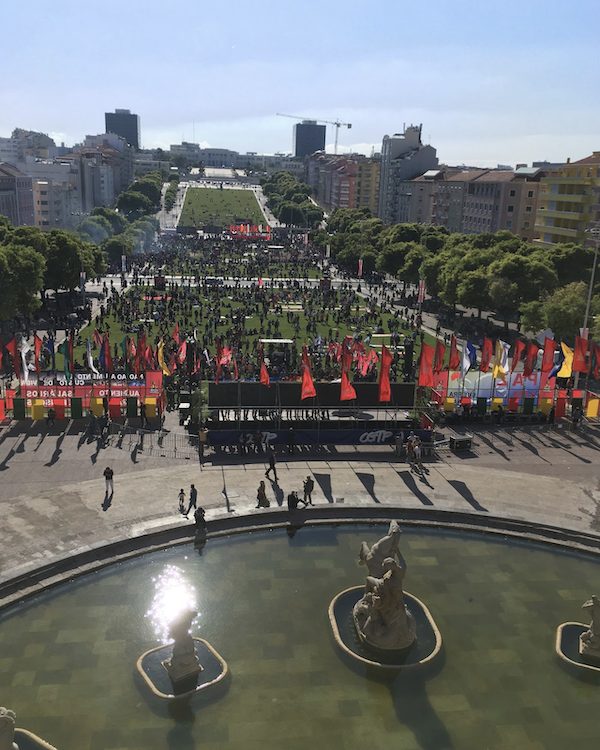
May Day in the park.
As of today, I feel fairly settled into our apartment. Unlike Milo and his team, I'm not working during weekdays, so I plan to go on a lot of solo adventures to see museums, ruins, etc. I'll also be exploring what I want to do next professionally, though I'm trying not to be so obsessive and goal oriented about it to the detriment of experiencing a new place.
Here are my initial impressions of Lisbon as an outsider.
Old architecture is the rule, not the exception. The airport felt like the most modern building I have been in so far! Generally, older buildings have been maintained and updated as needed instead of torn down. Our Airbnb has modern appliances, etc. but the front door has this amazing key, and the doors and floors look like my old Baltimore apartment which was around 120 years old when I lived in it.
You see a lot of restoration projects, but also a lot of old buildings that are in disrepair. I imagine those buildings either have intensive structural problems, are too expensive to fix, or are stuck in some kind of bureaucracy. Makes for some really interesting urban decay (and places for pigeons to live).
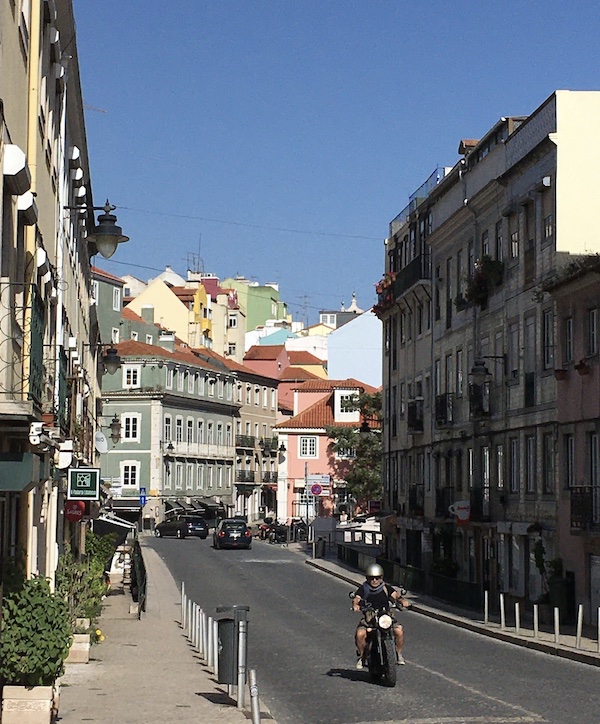
Lots of pastel colored old buildings in the Alcântara neighborhood.
There aren't a lot of accessibility accommodations like I'm used to in the US. Doorways are small, stairs are everywhere and sidewalks are small and uneven. I haven't seen a single walker, but I do see folks using forearm crutches, which I imagine are significantly more terrain appropriate with the uneven sidewalks. I think this would be a very hard city to navigate if you had limited mobility, though the buses and metro are great.
Lisbon is full of winding roads, walking up then down a lot of hills, stairs and passages only for pedestrians, etc. but I've found it pretty easy to keep my bearings with the sun and main roads. Lots of dog poop people didn't pick up on the sidewalks though, watch out for that!
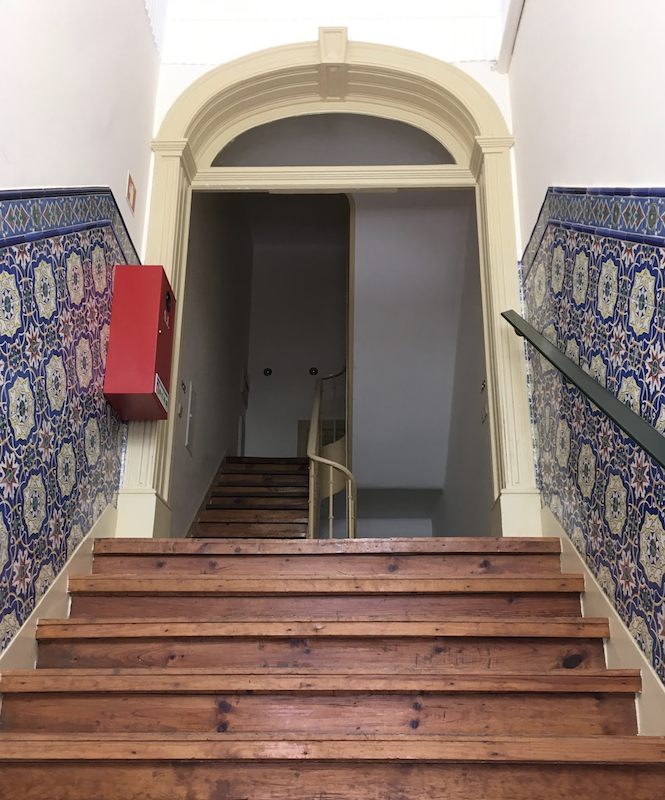
We have 3 flights of these stairs to go up to get to our apartment. Wasn't super fun with a big suitcase!
The hardest thing to adjust my biological clock to has been meal times. There are tons of little restaurants on the ground floors of the buildings. We're right above a GREAT taco joint, and I think there are 3 other restaurants just on our block.
From what I understand, there are 5 meals people eat. Traditionally, you have a simple breakfast (bread, cheese, meat), a mid-morning snack (pastries), lunch, a mid afternoon snack (and coffee) then dinner later. Many restaurants close for a few hours before dinner, and don't even reopen until 7 or later. Eating at 7 or 8 has really thrown me for a loop. I find myself staying up significantly later than I usually do, and getting up later as well. I'd love to understand a little more about how work days are usually set up, because I also don't understand if people actually eat all those meals during the day, or if they're just an option!
Restaurants and groceries are very inexpensive though, so I'm pretty sure I've spent significantly less on food than I did for a week in LA with significantly more eating out!
It's pretty easy to get around as an English speaker: A lot of folks speak some English, so paired with a little Portuguese, I've felt fairly confident making my way around the city and shops. If you learned Spanish, you can infer a lot of signs as well because spellings are similar, even if pronunciation is different. People have generally been very accommodating, and a lot of menus and museums have English translations.
2nd Entry
I wanted to do some journaling but felt like I needed to shake up my environment, so I took my journal and hopped on the metro. I ended up getting breakfast by the Time Out Market and writing in a park.
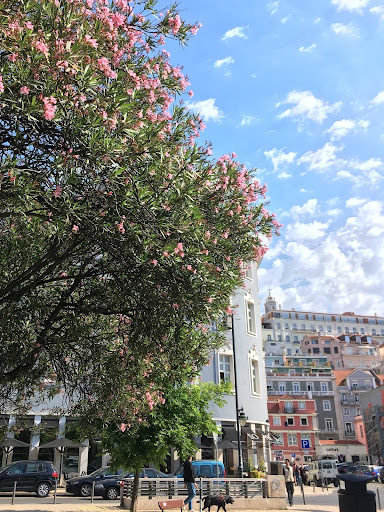
The view from my bench.
From there, I wanted to make it to the Carmo Convent- a chapel that was destroyed in an earthquake and turned into a museum. In my meandering, I also came across the Money Museum of Lisbon.
The museum focused on the history of money around the world - why people chose to start making money, what physical forms were used, who was allowed to make money, etc. - but the most interesting thing was realizing how little I knew about the political history of Portugal. Over the last 200 years, they sometimes didn't have enough money in circulation for what people needed or, because of political unrest, the form of money changed a bunch of times. At home, I ended up reading the entire Wikipedia about the history of Portugal!
Much of the way that informs how Lisbon is today today is all because of a huge earthquake in 1755.
Speaking of which, I continued hiking up the hill to the Carmo Convent. The Chapel was destroyed in that same earthquake, and turned into a ruin/museum. Interestingly, it had begun to be repaired soon after the event, but they stopped and used it instead to shelter a bunch of religious artifacts during times of religious unrest before opening to the public.
It's a beautiful place to be, it's very aesthetically pleasing to have the giant structural pillars of the church holding up the sky 3ish stories above you. There is also a large collection of artifacts that were interesting, though in my opinion I would have liked more context about all of them!
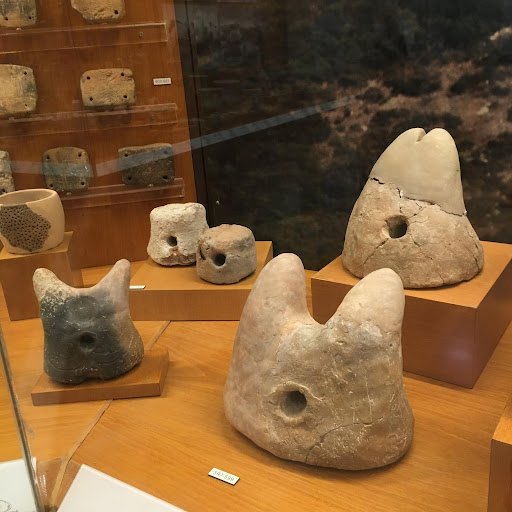
These were my favorites from a collection of neolithic tools discovered at a site in Portugal. They were just marked "horned idols."
The next day, Milo and I went to the beach at Costa da Caparica. The bus took us to a side of town I haven't been to, which meant passing under a Roman Aquaduct that spanned the whole valley, and getting close to the giant statue of Jesus (not as big as the one in Brazil of course).
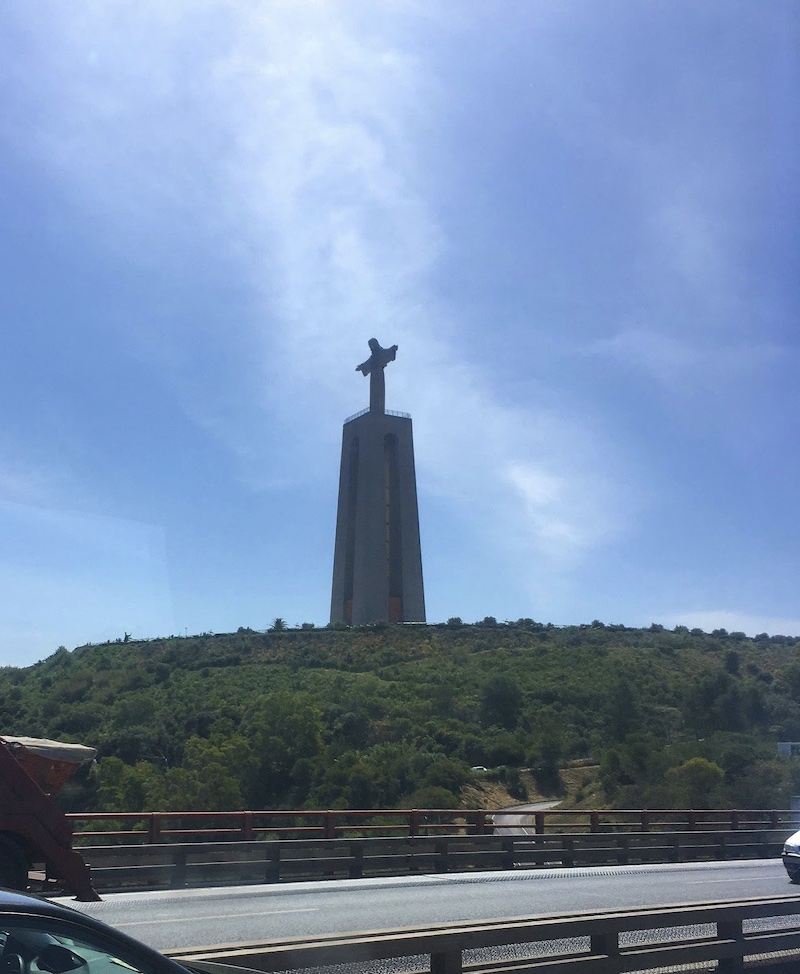
We picked that beach because it seemed like the place locals rather than tourists went to, and it was great! Not non-fancy shops lined the blocks to the beach before a long long stretch of waves split up by jetties. The waves were GREAT! They were big, but not super powerful. I swam and body surfed for quite a while, and it never felt like the waves were too over powering or like I was getting too tired.
Lots of folks were surfing there too because you didn't have to go out too far to get beyond the zone where everything crests. That's the part I find most challenging about surfing, I haven't quite figured out an efficient way of getting my board and myself through the waves without paddling like a maniac. I'm going to look into surfing lessons and rentals in that area, because if it's always like that? I think I could get good at surfing while I'm here!